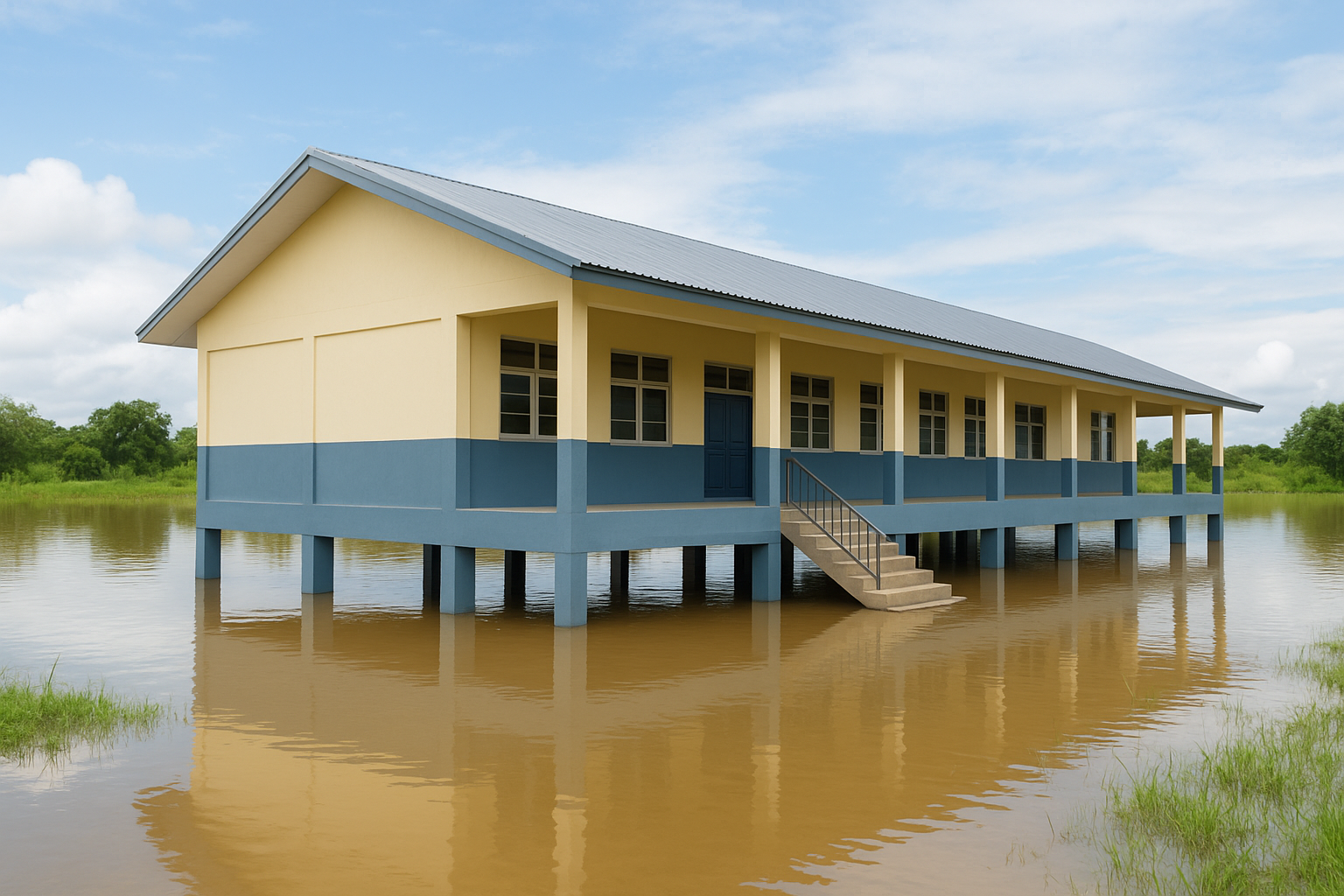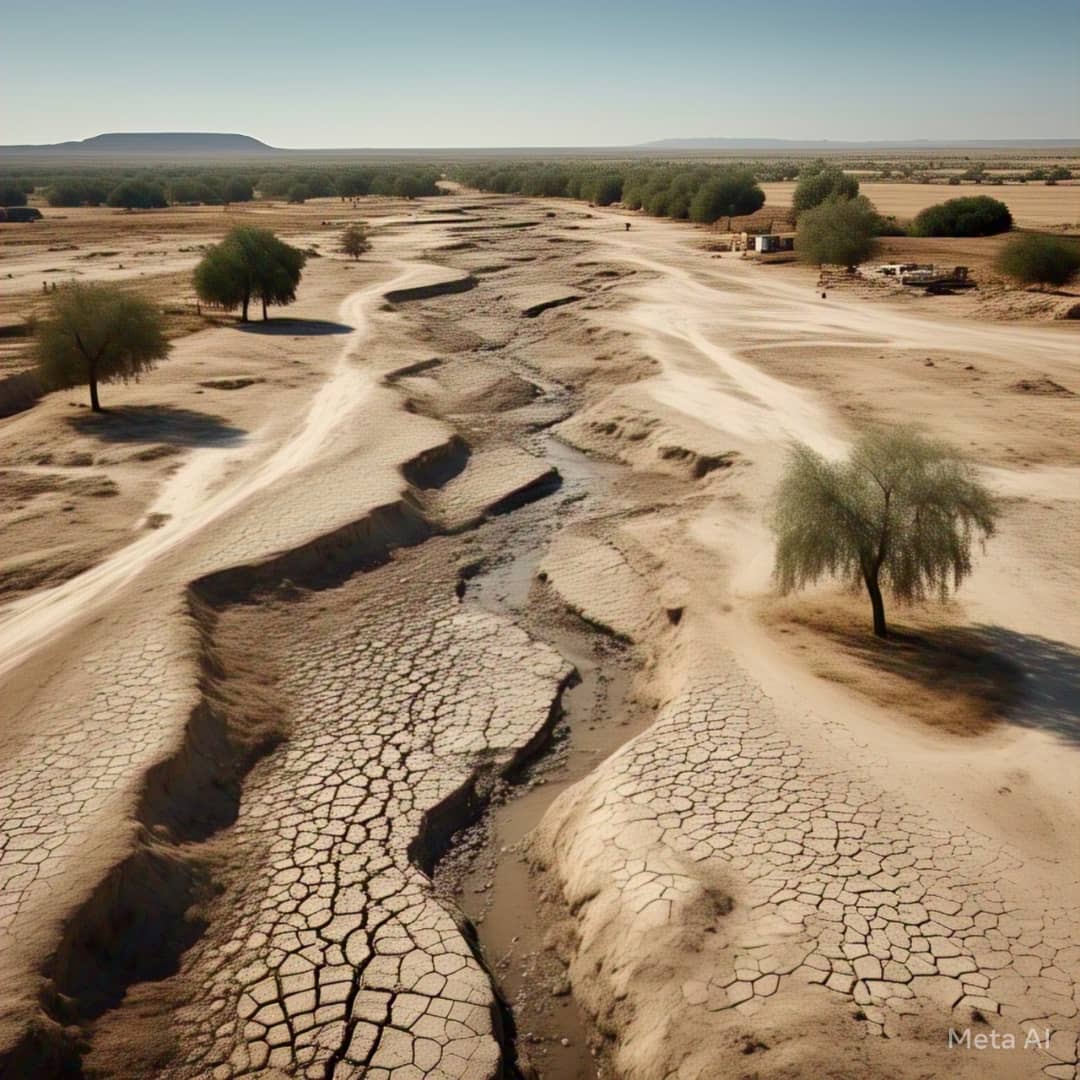Alfred Ajayi
Every rainy season, communities across Nigeria brace for floods that devastate lives, livelihoods, and essential services. From the coastal plains of the Niger Delta to riverine belts of Anambra, Kogi, Benue and beyond, schools are forced to close, health centres are submerged, roads collapse, and homes are washed away.
The Nigerian Hydrological Services Agency (NIHSA), the 2025 Annual Flood Outlook had identified more than a thousand high-risk communities across 148 Local Government Areas. The Nigerian Meteorological Agency (NiMet), in its Seasonal Climate Prediction, equally warned of heightened rainfall and associated urban flooding risks this year.
As the floods are anticipated, the question rises about the preparedness of communities and their infrastructure to withstand them. With flood-resistant infrastructure, losses to flood disaster are reduced as people move on with their lives at the recession of the deluge. This is why investing in flood-resistant infrastructure such as schools, healthcare facilities, roads, homes, and utilities is urgently desirable.
Why it matters
Floods disrupt society’s most vital lifelines. Schools shut down at the very moment children need stability. Health centres, which should be first responders during emergencies, are rendered unusable. Roads become impassable, cutting off markets and aid. Families are displaced from unsafe homes into crowded camps where disease spreads.
Globally, the World Bank estimates that resilient infrastructure yields $4 in benefits for every $1 invested, through reduced losses and avoided disruptions. For Nigeria, where annual floods routinely displace tens of thousands, destroy farmland, and cost billions in damages, the economic and social case is clear.
Beyond economic benefits, resilience is about dignity and rights. For instance, a flood-proof health clinic ensures expectant mothers can still access care during heavy rains. A school built on higher plinths means no disruption of school calendar as often witnessed in most Nigeria coastal communities. Also, stronger roads allow farmers to reach markets, sustaining food supply chains despite flooding.
Resilient infrastructure
Resilient infrastructure means that schools for instance should be built with elevated foundations, flood-tolerant materials, and proper drainage systems. Access routes must be kept safe even in inundation, while latrines and water points are raised to prevent contamination. The Comprehensive School Safety Framework (2022–2030) provides practical guidelines.
Primary healthcare centres must secure critical equipment, medicines, and power sources above expected flood levels while backup solar power, elevated latrines, and protected water sources are equally essential to prevent service collapse. The World Health Organization offers a framework for climate-resilient, environmentally sustainable healthcare facilities.
Critical infrastructure such as roads and bridges equally require careful hydrological design: elevated roadbeds, upsized culverts, and maintenance-friendly drainage. Where feasible, nature-based solutions like wetlands can buffer floodwaters. Flooding has done unquantifiable damage to many roads and bridges across the country.
Residential buildings in flood-prone communities will be safe with raised foundations, damp-proof courses, flood-compatible finishes, and safe sanitation. UN-Habitat’s Guidelines for Flood-Resistant Houses outline low-cost designs adaptable for rural and peri-urban Nigeria.
Whose responsibility?
While a lot rests on government shoulders in ensuring flood resilient communities, achieving it is not solely a government responsibility. Rather, it requires coordinated action from individuals, families, communities, the state, private sector, and civil society.
Individuals residing in flood-prone areas must stay informed with NiMet and NIHSA advisories, and prepare household evacuation plans. They must elevate electrical sockets, valuables, and critical supplies above flood lines as well as use water-resistant finishes in ground floors.
Households should jointly invest in small-scale flood protection measures like clearing drains, building raised walkways, and improving household sanitation. Very importantly, every member of the household should keep important documents and medications in waterproof packs. Where possible, they should purchase micro-insurance for household assets.
On their part, flood-prone communities should regularly organize collective drain-cleaning campaigns before peak rains and map safe shelters and evacuation routes; practise community drills. They should equally protect wetlands, riverbanks, and green belts that naturally reduce flood peaks. Above all, communities through school-based Parents Teachers Associations PTAs and Ward Development Committees, (WDCs) must ensure that school facilities in their localities meet resilience standards.
Local and state governments are also expected to use Seasonal Climate Prediction and Annual Flood Outlook reports to guide siting and timing of infrastructure works. They could also enforce building codes requiring minimum elevation of floors, raised sanitation systems, and adequate drainage.
They should prioritize resilient upgrades to public lifelines like roads, clinics, schools ensuring they can withstand seasonal flooding, while also institutionalizing “Build Back Better” in reconstruction contracts. This ensures that destroyed infrastructure is not rebuilt to the same vulnerable standards. This helps to reduce losses during flood disaster.
FG’s all-important role
The Federal Government must sustain and also broaden early-warning systems, ensuring that flood forecasts reach the last mile in the country’s flood-prone communities through SMS, local radio, and vernacular translations. They should link federal transfers and approvals to states’ compliance with resilient design standards.
It will be helpful that the Federal Government looks into expanding watershed and erosion control programmes as previously piloted under the Nigeria Erosion and Watershed Management Project (NEWMAP).
The Private Sector players are not left behind. Developers should adopt flood-resistant building codes and avoid constructing on wetlands. More often, building codes and standards are compromised by developers. It is sacrosanct to flood-proof critical infrastructure like power sub-stations, waterworks, and communication towers, as this ensures continuity of services during flood disaster.
Financial institutions can provide some respite by offering green loans for resilient housing and infrastructure, while insurance companies specifically design products for flood-vulnerable households and farmers to lessen the financial burden on them.
NGOs and Civil Society serve as a critical bridge relating technical forecasts to communities through sensitization and advocacy that prompt the needed community action. They also offer support to schools and health centres to implement preparedness plans and resilience upgrades.
NGOs equally promote low-cost, community-driven retrofitting of homes using flood-compatible materials. They are also in the best position to pilot nature-based solutions such as mangrove restoration or watershed reforestation that combine resilience with livelihoods.
Nigeria’s path forward
Floods will continue to challenge Nigeria in the face of climate change, rapid urbanization, and poor land-use planning. But they do not have to translate into disaster. Resilient infrastructure offers a pathway to safer, healthier, and more prosperous communities.
The tools and frameworks are there. The Sendai Framework for Disaster Risk Reduction urges nations to invest in resilience; NiMet’s SCP and NIHSA’s AFO provide the evidence base; and international guides from WHO, UN-Habitat, and the World Bank outline practical designs.
What is yet missing is strong political will, good coordination, and inclusive participation. Every stakeholder has a role. From the family that raises its latrine above flood level, to the community that restores its wetland, to the local government that enforces resilient building codes, each action contributes to a safer future.
The cost of inaction is huge and innumerable – loss of lives and property, collapsed services, and cycles of displacement. Also, the reward of building flood-resistant infrastructure is equally unquantifiable. They include: continuity of education, health care, transport, and dignity in the face of natural hazards. Nigeria – it is not too late to start NOW.
First published by Radio Nigeria





